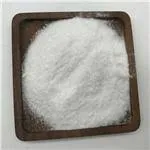Chemicals Used to Treat Sewage
Sewage treatment is a critical process aimed at removing contaminants from wastewater to safeguard environmental and public health. The treatment process often involves a variety of chemical agents that play essential roles in breaking down pollutants, disinfecting the effluent, and ensuring the treated water is safe for discharge into natural water bodies or for reuse. This article will delve into some of the key chemicals used in sewage treatment and their specific functions.
1. Coagulants and Flocculants
One of the first stages in sewage treatment is the removal of suspended solids and colloidal particles. Coagulants, such as aluminum sulfate (alum) and ferric chloride, are frequently used to destabilize small particles suspended in the water. When added to the sewage, these chemicals interact with particles to form larger aggregates known as flocs. This process enhances sedimentation and assists in the removal of solids during the primary treatment phase.
Once the coagulants have done their part, flocculants, such as polyacrylamide, can be introduced to further agglomerate the formed flocs, making them larger and heavier so they can settle more effectively. This dual approach of using coagulants followed by flocculants significantly improves the efficiency of solids removal in sewage treatment.
2. pH Adjustment Chemicals
The pH of sewage can drastically affect the efficiency of the treatment process and the solubility of various contaminants. To ensure optimal conditions for microbial activity and chemical reactions, pH adjustment is crucial. Chemicals such as sulfuric acid or sodium hydroxide are commonly employed to lower or raise the pH levels, respectively. Maintaining the pH within a desired range enhances the effectiveness of other treatment chemicals and processes, including nutrient removal and disinfection.
3. Oxidizing Agents
what chemicals are used to treat sewage

In the secondary treatment phase, where organic matter is biologically decomposed, oxidizing agents such as chlorine, ozone, and hydrogen peroxide can be utilized. These chemicals serve multi-faceted purposes they can oxidize organic compounds, disinfect the effluent, and break down complex pollutants. Chlorine is one of the most widely used disinfectants due to its effectiveness in killing pathogens. However, it must be handled with care as it can produce harmful byproducts, such as trihalomethanes.
Ozone, while more potent as a disinfectant than chlorine, is generated on-site due to its unstable nature. Ozone treatment, however, does not leave harmful residues and is preferred for certain applications. Hydrogen peroxide is also gaining traction as a safer alternative and can help in reducing chemical pollutants and enhancing the biodegradability of the wastewater.
Excess nutrients, particularly nitrogen and phosphorus, can lead to water quality issues such as eutrophication. To mitigate these issues, specific chemicals may be used. For nitrogen removal, substances like sodium nitrate and ammonium sulfate can be added to promote biological nitrification and denitrification processes. Phosphorus removal often involves the addition of metal salts like aluminum or iron, which react with phosphates to form insoluble compounds that can be easily removed from the slurry.
5. Dechlorination Agents
After chlorination for disinfection, it is often necessary to remove residual chlorine before releasing the treated water into the environment. Dechlorination agents, such as sodium bisulfite, are applied to neutralize residual chlorine, ensuring that the effluent is safe and environmentally friendly.
Conclusion
The application of chemicals in sewage treatment is essential for effective contamination reduction and ensuring public health safety. From coagulants and flocculants to disinfectants and nutrient removal agents, each chemical plays a critical role in the multifaceted process of wastewater treatment. As environmental regulations become more stringent and the demand for sustainable practices grows, the sewage treatment industry continues to evolve, exploring innovative chemical formulations and process improvements to enhance efficiency and minimize environmental impact.

